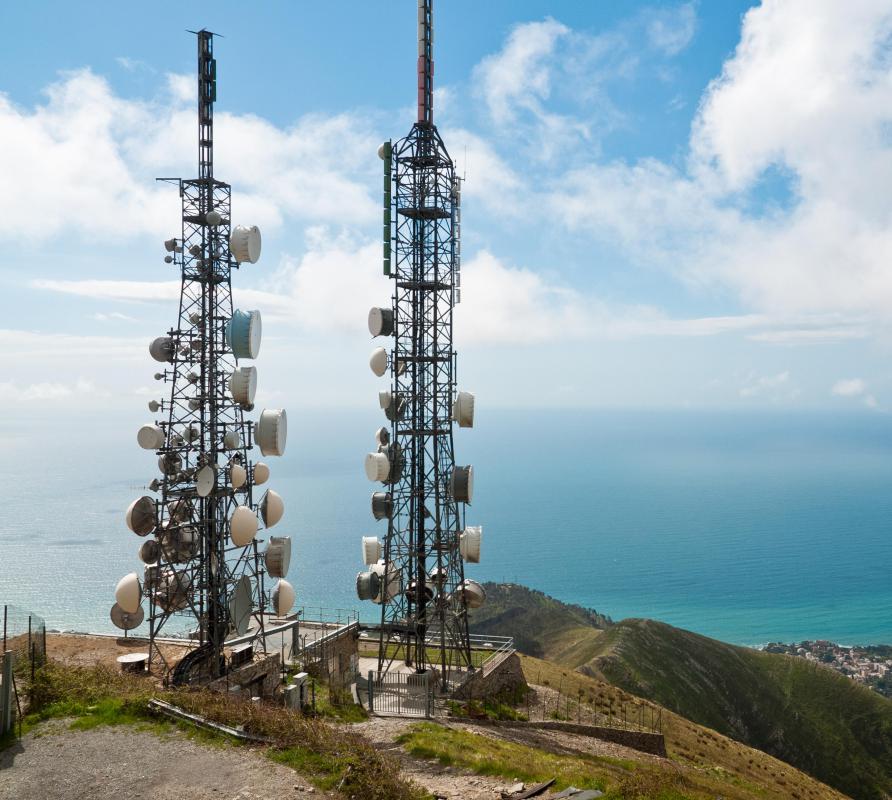At WiseGEEK, we're committed to delivering accurate, trustworthy information. Our expert-authored content is rigorously fact-checked and sourced from credible authorities. Discover how we uphold the highest standards in providing you with reliable knowledge.
What Are the Best Tips for Making a DIY TV Antenna?
There are several factors to consider when making a do-it-yourself (DIY) television (TV) antenna. One of the most important things to understand is that the individual parts of an antenna need to be placed at specific distances from one another to work effectively, meaning that following a good plan will be helpful. The supplies used, especially for the antenna and phasing bars, should be exposed metal with no coatings or other attachments that could reduce their receiving abilities. The overall construction of the TV antenna should be looked at because, in some situations, the antenna might need to be moved or adjusted regularly to receive different signals, making mobility an important design consideration. The ability of the DIY TV antenna also can be enhanced if all of the metal wires used to construct the antenna are as close to the same size as possible.
The first tip when assembling a DIY TV antenna, and one of the easiest ways to get the best performance from the antenna, is to make sure that all metal surfaces are clean and free from any type of coating. Ensuring that each point of contact between metal surfaces has as much surface area touching as possible will help the signal to remain strong as it travels to the TV. The opposite advice is true when dealing with a DB4-style antenna, on which the phasing bars cross one another and should either be coated in a non-conductive coating or electrical tape at the point where contact might occur.

It is vital to follow a set of proven instructions when making a DIY TV antenna. This is because many of the details, such as the placement and spacing of the antenna tines — as well as the shape of the tines themselves, in the case of a fractal antenna — are important for receiving the signal. The plans also might be designed to target a specific signal type, such as ultra-high frequency (UHF) broadcasts, and the alignment of the components can help to address only that signal type.
The mobility of a DIY TV antenna should be a factor in how it is eventually mounted on a base. With the exception of a potentially very complex omni-directional antenna, most receivers might need to be turned to face the direction of the transmitted signal. Mounting the antenna on a rotating base, or just ensuring that it can be easily moved, can make it a more dynamic receiver.
When the DIY TV antenna is completed, the first few tests might not be indicative of its full potential. Digital TV signals are very weak and easily affected by atmospheric conditions, weather and even physical barriers. Establishing the best direction and location for the DIY TV antenna is best done on a clear, sunny day.
AS FEATURED ON:
AS FEATURED ON:











Discussion Comments
With cable TV and satellite TV and TV on computers and phones, I imagine there are a lot of young people out there who have no concept of the old TV antennas like the rabbit ears, and the big antennas that were mounted on top of the house or on a long metal pole.
I can remember when the first roof mounted antennas came to where I lived. Having one of them was almost a status symbol because not everyone could afford them.
@Drentel - I had one of those small portable TVs when I was in college. In my dorm room, the TV did not get the best reception, so in addition to holding the antenna and moving it in every possible direction, my roommates and I made a game of fashioning our own attachments to connect to the antennas. We had clothes hangers and pretty much anything else that was made of metal in the room attached to the antenna at one point or another.
Is anyone out there old enough to remember the old black and white picture TVs with the rabbit ears for antenna? Most of my friends have at least one story where one of the kids in the house had to stand beside the TV and hold onto the antenna so everyone else in the house could sit and watch a TV program. Otherwise, the picture was too fuzzy, or there was no picture at all.
I would say those were the good old days, but to be honest I have no desire to go back to those days, and since I was usually the one holding and adjusting the antenna while everyone else watched TV from a seated position maybe you can understand why I feel this way.
Post your comments